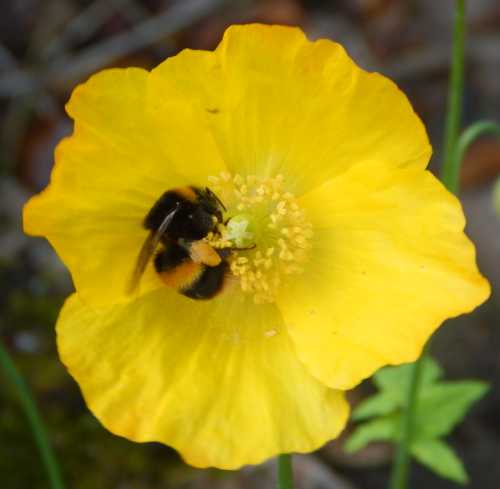Bees In The Wall Or Brickwork?
I have received a number of queries relating to bees in brickwork, walls, cavity walls of various types of buildings. The query usually concerns honey bees or mason bees, and the nests are quite different!
Please note that bumble bee nests in walls will only be temporary, and the need for removal is exceptionally rare. I have never, ever heard of a genuine reason to kill bumble bees for this purpose. Please see notes below.
Relocations may seem like a great solution, but may not be successful - success means producing new queens (gynes) at the end of the season, not merely still being alive after checking a couple of days later.
Honey Bees Or Mason Bees?
Mason Bee Nests
If you have mason bees, there will be a few individuals nesting in small tunnels (holes), perhaps about the diameter of a pencil or a little wider. I am not aware of these species causing damage to buildings, and certainly there are many ancient buildings still standing, that have provided homes for mason bees for many years.
However, where walls have poor quality mortar, then a building may be vulnerable to crumbling or hastened deterioration. Weak mortar should be repaired.
There are a number of different species of mason bee, so appearance may vary. Below is an image of a red mason bee, Osmia bicornis:
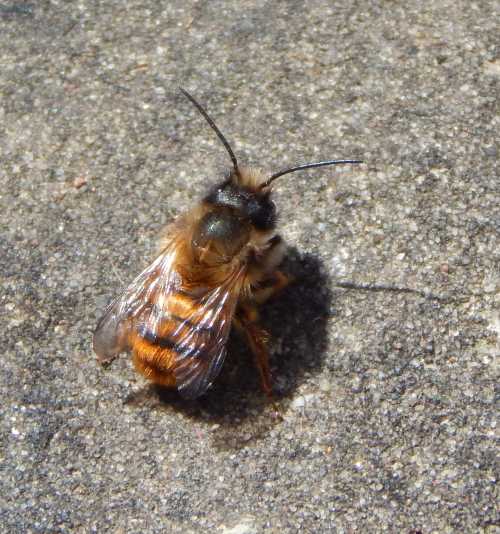
Will Mason Bees Sting?
Mason bees are not aggressive, so there is no need to worry about stings. You wouldn't worry about walking through a public park or garden for fear of being stung by a bee.
In the same way, there is no need to be concerned about a few mason bees in the garden or around the property.
Honey Bee Nest In A Wall Cavity
If you have honey bees nesting in the fabric of your building, you'll probably see many, many bees.
Below is an image of a couple of honey bees. You will note they are slender in comparison to bumble bees (see below).
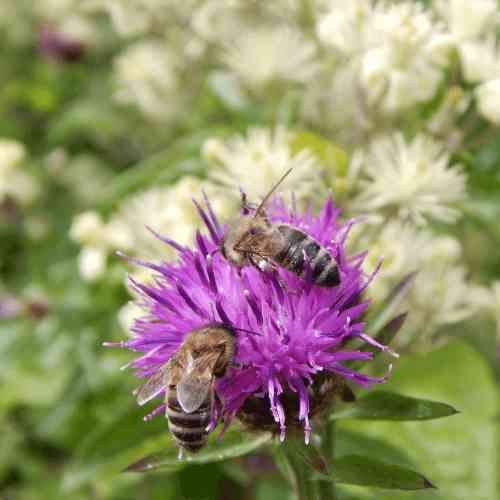
Your only option is to seek professional advice.
Please note that whilst many beekeepers are happy to collect swarms (even for free in some locations), a honey bee nest within a wall cavity is a different matter, for one thing, the average beekeeper is unlikely to have insurance for such work.
However, I am aware that some beekeepers do perform this service, but will obviously need to charge a fee. If you locate a beekeeper for this task, please check all the details as to the extent of the service and cost.
You should also check your house insurance to see whether or not they will cover the expense.
This website receives visits from all over the world, so I cannot include all details of possible service providers here, realistically I can only provide a starting place for making enquiries. However, for the US and UK:
USA
Resource here: Ethical Honey Bee Removal.
Currently I have a list of beekeeping associations in North America only, but it may not be complete. They may have suitable contacts to help you find a suitable professional in your area who will remove the bees for you.
UK
You could try a company called BEE GONE (https://beegone.co.uk).
They specialise in removing honey bees and relocating them. Please note that I do not advise removing or relocating bumble bees, mason bees or leafcutter bees.
Wasp nests have to be removed when they are very large, but even they can sometimes be left alone - see reader experiences of wasp nests.
How Are Honey Bees Removed From A Wall Cavity?
Usually the wall will have to be cut into. Sometimes honey bees can safely be vacuumed out of wall spaces (without harming the bees), or they may have to be smoked out somehow.
Individual scenarios need to be assessed on a case by case basis. Beekeepers have the right type of equipment, and they'll be able to advise you on plugging gaps etc to prevent bees, or even wasps, moving back into the space.
Below is a video of a beekeeper removing a nest of honey bees from a wall. You can see there is a fair amount of work involved that an average hobby beekeeper will not wish to perform. Your situation may be somewhat different, but you may find the video interesting nevertheless.
Bumble Bee Nests In Walls
Whenever I hear of people having bumble bees removed from a simple gap or hole in a wall, I feel extremely sad. Bumble bees in a wall:
1. Will not cause damage.
2. Will not at all be interested in you or any other human.
3. Will only be temporary.
I get angry when I hear of pest control companies killing bumble bees in scenarios when there is no need.
Fortunately, the British Pest Control Association takes a dim view of killing bees - see their leaflet: We're Leaving You Bee. I would like to see this approach all over the world!
Below is a Tree Bumble Bee - Bombus hypnorum, a species which occasionally causes concern in the UK. Of course, other bee species have a different appearance.
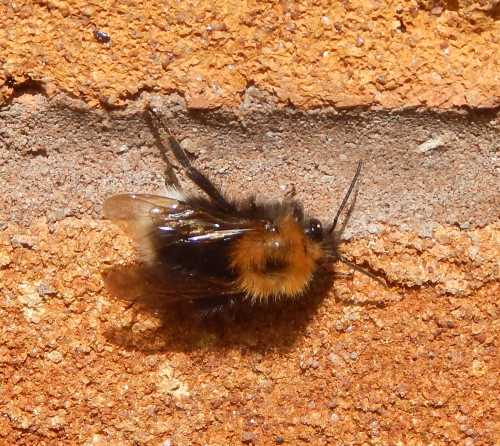
If you have tree bumble bees in your property, please visit my page about bee nests in bird boxes, where you can see more images and video of 2 simultaneously active nests in neighbouring gardens that caused no bother to a family (2 children and a dog) and couple (with a dog) - for reassurance and information.
Help with bumble bee nests
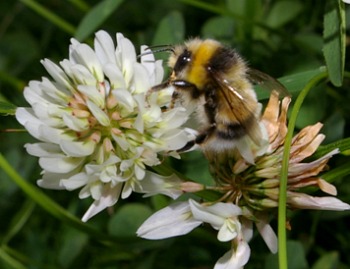
Find out how I responded to real queries about bumble bee nests:
Disturbed nest, accidentally 'damaged' - what can I do to help?
A bee nest in the attic, and workmen are arriving soon
Will this bumble bee nest attract wasps?
Will bumble bees cause damage in my roof?
